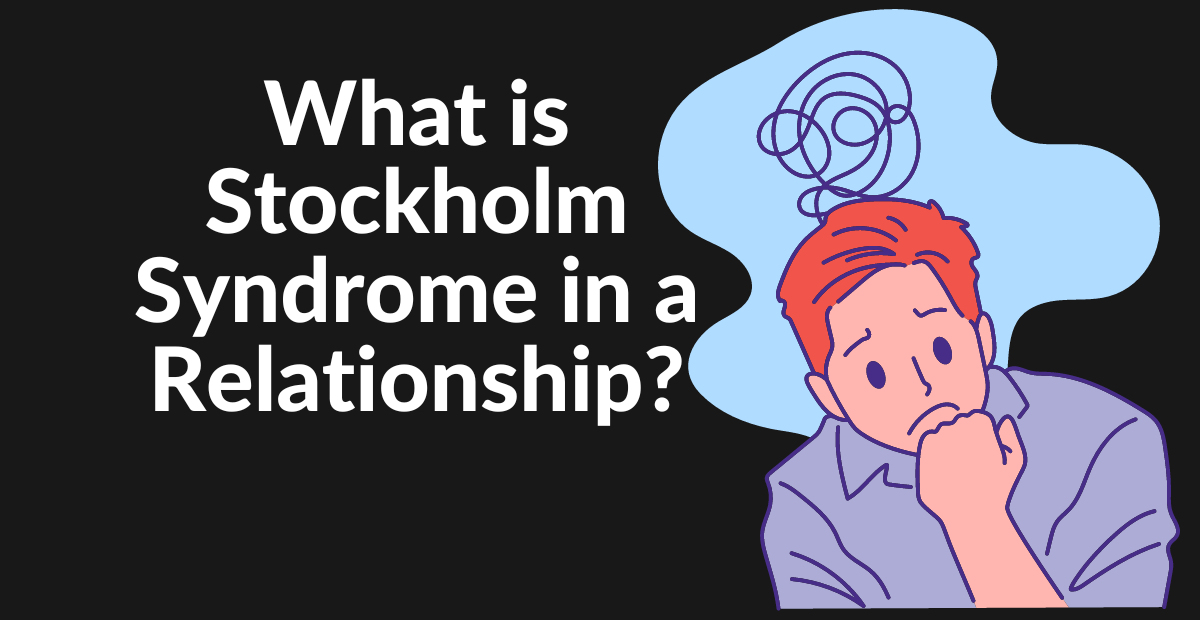In this article, we delve into the intricate phenomenon known as Stockholm Syndrome and its relevance in the context of relationships. Our aim is to provide you with a comprehensive understanding What is Stockholm Syndrome in a Relationship, its underlying mechanisms, and how it can impact individuals involved in relationships.
By shedding light on this subject, we hope to contribute to the existing body of knowledge and offer insights that surpass the current top-ranking article on Google.
Defining Stockholm Syndrome
Stockholm Syndrome refers to a psychological phenomenon wherein hostages or abuse victims develop an emotional bond or empathy towards their captors or abusers. The term originated from an incident in Stockholm, Sweden, where hostages formed a sympathetic connection with their captors.
However, it is crucial to note that Stockholm Syndrome can extend beyond hostage situations and manifest in various forms of abusive or coercive relationships.
Psychological Mechanisms at Play
Here are psychological mechanisms at play behind Stockholm Syndrome;
1. Trauma Bonding
One of the key elements of Stockholm Syndrome is trauma bonding. Trauma bonding occurs when a victim forms a deep emotional attachment to their abuser as a means of survival.
This bond is often reinforced through intermittent kindness or positive experiences from the abuser, leading the victim to develop a conflicted sense of attachment and dependency.
2. Cognitive Dissonance
Cognitive dissonance plays a significant role in perpetuating Stockholm Syndrome. Victims experience a conflict between their rational understanding of the abuse and their emotional connection to the abuser.
To alleviate this dissonance, they may rationalize or idealize their abuser’s actions, creating a distorted perception that reinforces their emotional attachment.
3. Survival Instincts
In high-stress situations, our primal survival instincts come into play. Victims may unconsciously align themselves with their captors as a survival strategy.
By appeasing their abuser, victims believe they can reduce the risk of further harm and increase their chances of survival, albeit in an unhealthy and distorted manner.
What is Stockholm Syndrome in a Relationship?

While Stockholm Syndrome is commonly associated with hostage scenarios, it can also occur in interpersonal relationships where one partner exerts control and manipulates the other.
Such relationships often involve emotional or physical abuse, where the victim may develop an unhealthy attachment to their abuser.
Signs and Symptoms of Stockholm Syndrome in a Relationship
Identifying Stockholm Syndrome within a relationship can be challenging, as victims may exhibit conflicting emotions. Some common signs include:
- Dependency: The victim becomes emotionally reliant on their abuser, often seeking validation and approval.
- Isolation: The abuser isolates the victim from their support network, creating a sense of dependency on the relationship.
- Defending the Abuser: The victim may defend or make excuses for their abuser’s behavior, attributing it to external factors or personal flaws.
- Fear of Leaving: Despite the abuse, victims may fear the consequences of leaving the relationship, feeling trapped and helpless.
Breaking the Cycle of Stockholm Syndrome in a Relationship
Escaping the grip of Stockholm Syndrome within a relationship can be a complex and gradual process. Here are a few steps victims can take towards reclaiming their autonomy:
- Recognize the Abuse: Acknowledging that the relationship is abusive is the first step towards breaking the cycle. Seeking support from trusted friends, family, or professionals can provide the necessary guidance and validation.
- Create a Safety Plan: Developing a safety plan allows victims to establish a support network, identify resources, and devise an exit strategy when they are ready to leave the abusive relationship.
- Seek Professional Help: Consulting with therapists or counselorscan be instrumental in navigating the emotional complexities of Stockholm Syndrome. These professionals can provide guidance, offer coping strategies, and empower victims to rebuild their lives.
- Build a Support System: Surrounding oneself with a strong support system is crucial for recovery. Connecting with support groups or engaging in therapy can provide validation, understanding, and encouragement throughout the healing process.
- Focus on Self-Care: Prioritizing self-care is vital for victims of Stockholm Syndrome. Engaging in activities that promote physical and emotional well-being, such as exercise, mindfulness, and pursuing hobbies, can aid in regaining a sense of self and building resilience.
Can Stockholm Syndrome occur in any type of relationship?
Yes, Stockholm Syndrome can occur in various types of relationships, including romantic partnerships, family relationships, and even cults or hostage situations.
The underlying dynamics of power, control, and manipulation play a significant role in the development of Stockholm Syndrome.
Is Stockholm Syndrome permanent?
While Stockholm Syndrome can be a powerful psychological response, it is not necessarily permanent.
With the right support, therapy, and a safe environment, individuals experiencing Stockholm Syndrome can gradually heal and break free from the emotional bond with their abuser.
Are all abusive relationships characterized by Stockholm Syndrome?
No, not all abusive relationships involve Stockholm Syndrome. It is a specific psychological phenomenon that occurs in some cases where the victim develops an emotional attachment to their abuser. Many factors contribute to the development of Stockholm Syndrome, and not every abuse victim experiences it.
How can someone help a person experiencing Stockholm Syndrome?
Supporting a person experiencing Stockholm Syndrome requires understanding, empathy, and non-judgment. Encouraging them to seek professional help from therapists who specialize in trauma and abuse can provide valuable guidance and support on their journey towards healing and breaking free from the abusive relationship.
Can Stockholm Syndrome be prevented?
Preventing Stockholm Syndrome involves addressing the underlying causes of abuse and promoting healthy relationship dynamics built on respect, equality, and open communication.
Educating individuals about the signs of abusive relationships and providing resources for intervention can contribute to prevention efforts.
What are the long-term effects of Stockholm Syndrome?
The long-term effects of Stockholm Syndrome can vary from person to person. They may include difficulties in forming healthy relationships, ongoing trauma symptoms, low self-esteem, and emotional challenges. Therapy and support can help individuals navigate these effects and work towards healing and recovery.
Final Words on Stockholm Syndrome in a Relationship
In conclusion, Stockholm Syndrome is a complex psychological response that can manifest within abusive relationships. By understanding the underlying mechanisms and recognizing the signs, we can better support individuals who find themselves trapped in such dynamics.
Remember, it is essential to prioritize the safety and well-being of victims and provide them with the necessary resources and support to break free from the cycle of abuse.
